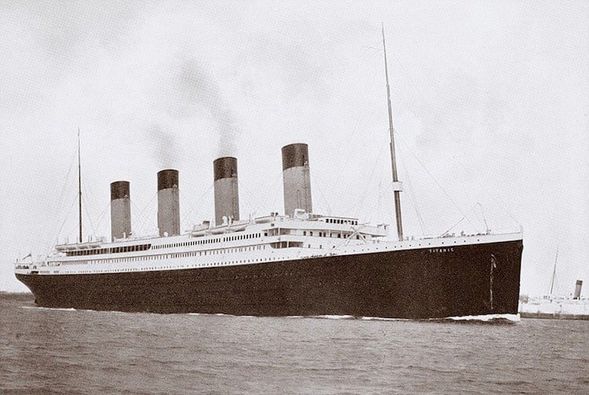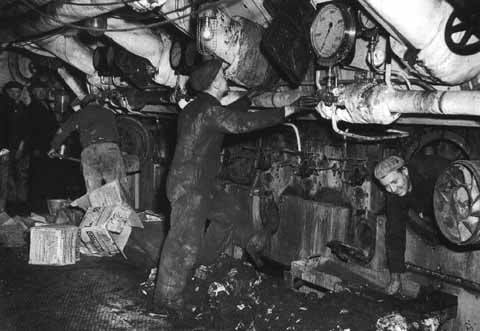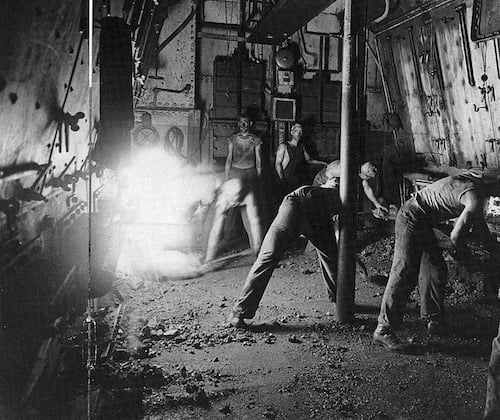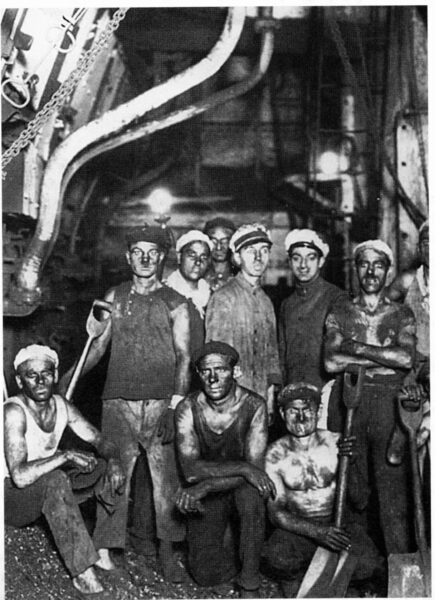Dispatches from Home: TITANIC! Grandeur and Coal Dust

TITANIC! The mere mention of the name conjures sepia-toned images of elegant ladies and sophisticated gentlemen gliding up and down the Grand Staircase as they stroll to the Jacobean-style dining room or the cozy warmth of their walnut-paneled staterooms. Even the steerage passengers were exposed to luxuries heretofore unknown by them. Electric lights. Fresh linens. And plenty of tasty food. But buried deep beneath the gilded rooms, the smell of perfume and waltzes played by the ship’s band lay another world–a dark, coal-dust-infested world of roaring fires and scorching heat.
I’m currently reading “Down Amongst The Black Gang – The World and Workplace of RMS TITANIC’S Stokers.” The Black Gang’s job was to keep the TITANIC’S boilers fed, which meant shoveling a ton of coal into each of the twenty-four boiler furnaces every two minutes. Their name was derived from their black appearance created by the coating of coal dust on their faces.
In the boiler rooms’ dimly lit world, the 325 members of the TITANIC’S Black Gang included stokers, engineers, plumbers, greasers, trimmers, and electricians. Their uniforms were grimy shirts and pants made of coarse cloth and a bandana worn loosely around the neck. The bandana was needed to wipe perspiration from their faces and hands while clearing their lips and nostrils of a sticky, clogging accumulation of sweat and coal dust.
In steamships that plied the tropics, the boiler room temperature could reach more than 130 degrees. Even on the North Atlantic run, the temperature was not much less. To quench their perpetual thirst, the Black Gang drank from a large can of oatmeal or honey water.
There were no bathroom breaks during their four-hour shifts. They urinated on a coal pile or defecated on their shovel, using the furnace as their means of disposal – “a most hygienic method if nothing else, human defecation having combustible properties.”
After their shift, the Black Gang’s bodies were “dehydrated, faces and chests (if exposed) seared by the radiation from the open furnaces and hands inflamed from the heat of the slice bar that penetrated through the double layer of canvas used as a mitt. Any burns or scalds to the skin sustained on duty were smeared with tannic ointment.”
“Quite apart from this, there was the sheer noise level in the boiler room: that of scraping shovels on the steel floor plates, the crunching of coal under feet, the roar of air through the ashpit doors, the clanging of furnace doors, and the relentless peal of Kilroy’s Indicator Gong.” The gong was used to ensure that the stokers were working at maximum capacity. But on the morning of April 15, 1912, their work ceased.
Due to the heroic efforts of the Black Gang, who tried in vain to save the TITANIC and keep her lights burning, lives were saved. Even so, at 2:18 a.m., the lights finally failed, and two minutes later, she sank, sending over 1500 people to an icy cold grave, including 224 members of the Black Gang. So, the next time you watch TITANIC and Jack yells, “I’m King of the world!” remember this. His world, and that of thousands of others aboard TITANIC, was made possible by the men of the Black Gang toiling away in the burning hell of the boiler room far below the luxury up above.





